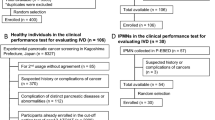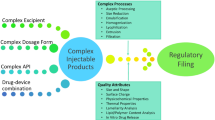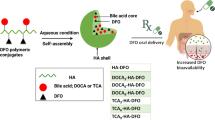Abstract
It was previously reported that a protein-free microemulsion (LDE) with structure roughly resembling that of the lipid portion of low density lipoprotein (LDL) was presumably taken up by LDL receptors when injected into the bloodstream. In contact with plasma, LDE acquires apolipoproteins (apo) including apo E that would be the ligand for receptor binding. Currently, apo were associated to LDE by incubation with high density lipoprotein (HDL). LDE-apo uptake by mononuclear cells showed a saturation kinetics, with an apparent K m of 13.1 ng protein/mL. LDE-apo is able to displace LDL uptake by mononuclear cells with a K i of 11.5 ng protein/mL. LDE without apo is, however, unable to displace LDL. The uptake of 14C-HDL is not dislocated by increasing amounts of LDE-apo, indicating that HDL and LDE-apo do not bind to the same receptor sites. In human hyperlipidemias, LDE labeled with 14C-cholesteryl ester behaved kinetically as expected for native LDL. LDE plasma disappearance curve obtained from eight hypercholesterolemic patients was markedly slower than that from 10 control normolipidemic subjects [fractional clearance rate (FCR)=0.02±0.01 and 0.12±0.04 h−1, respectively; P<0.0001]. On the other hand, in four severely hypertriglyceridemic patients, LDE FCR was not significantly different from the controls (0.07±0.03 h−1). These results suggest that LDE can be a useful device to study lipoprotein metabolism.
Similar content being viewed by others
Abbreviations
- AML:
-
aqute myeloid leukemia
- apo:
-
apolipoprotein
- FCR:
-
fractional clearance rate
- HDD:
-
high density lipoprotein
- LDE:
-
protein-free microemulsion
- LDL:
-
low density lipoprotein
- VLDL:
-
very low density lipoprotein
References
Brown, M.S., and Goldstein, J.L. (1986) A Receptor-Mediated Pathway for Cholesterol Homeostasis, Science 232, 34–47.
Grundy, S.M., Vega, G.L., and Bilheimer, D.W. (1985) Kinetic Mechanisms in Low-Density Lipoprotein Levels and Rise with Age, Arteriosclerosis 5, 623–627.
Thompson, G.R., Teng, B., and Sniderman, A.D. (1987) Kinetics of LDL Subfractions, Am. Heart J. 113, 514–517.
Ginsburg, G.S., Small, D.M., and Atkinson, D. (1982) Microemulsions of Phospholipids and Cholesterol-Esters: Protein-Free Models of LDL, J. Biol. Chem. 25, 8216–8227.
Lundberg, B., and Suominen, L. (1984) Preparation of Biologically Active Analogs of Serum Low Density Lipoprotein, J. Lipid Res. 25, 550–558.
Maranhão, R.C., Cesar, T.B., Pedroso-Mariani, S., Hirata, M.H., and Mesquita, C.H. (1993) Metabolic Behavior in Rats of a Nonprotein Microemulsion Resembling Low Density Lipoprotein, Lipids 28, 691–696.
Maranhão, R.C., Garicochea, B., Silva, E.L., Dorlheac-Llacer, P., Pileggi, F., and Chamone, D.A.F. (1992) Increased Plasma Removal of Microemulsions Resembling the Lipid Phase of Low Density Lipoproteins in Patients with Acute Myeloid Leukemia: A Possible New Strategy for the Treatment of the Disease, Braz. J. Med. Biol. Res. 25, 68–79.
Maranhão, R.C., Garicocchea, B., Silva, E.L., Dorlheac-Llacer, P., Cadena, S.M.S., Coelho, I.J.C., Meneghetti, J.C., Pileggi, F.J.C., and Chamone, D.A.F. (1994) Plasma Kinetics and Biodistribution of a Lipid Emulsion Resembling Low Density Lipoprotein in Patients with Acute Leukemia, Cancer Res. 54, 4660–4666.
Reisinger, R.E., and Atkinson, D. (1990) Phospholipid/Cholesteryl Ester Microemulsions Containing Unesterified Cholesterol: Model Systems for LDL, J. Lipid Res. 31, 849–858.
Zannis, V.I. (1989) Molecular Biology of Human Apolipoproteins B and E and Associated Diseases of Lipoprotein Metabolism, Adv. Lipid Res. 32, 1–64.
Boyum, A. (1964). Separation of White Blood Cells, Nature 204, 793–794.
Lowry, O.H., Rosebrough, N.J., Farr, A.L., and Randal, R.J. (1951) Protein Measurement with the Folin Phenol Reagent, J. Biol. Chem. 193, 265–275, 1051.
Greenwood, F.C., Hunter, W.M., and Glover, J.S. (1963) The Preparation of 131I-Labelled Human Growth Hormone of High Specific Radioactivity, Biochem. J. 89, 114–117.
Havel, R.J., Eder, H.A., and Bragdon, J.H. (1955) The Distribution and Chemical Composition of Ultracentrifugally Separated Lipoproteins in Human Serum, J. Clin. Invest. 34, 1345–1353.
Pittman, R.C., Knecht, T.P., Rosenbaum, M.S., and Taylor, C.A. (1987) A Nonendocytotic Mechanism for the Selective Uptake of High Density Lipoprotein-Associated Cholesterol Esters, J. Biol. Chem. 262, 2443–2450.
Folch, J., Lees, M., and Sloane-Stanley, G.H. (1957). A Simple Method for the Isolation and Purification of Total Lipids from Animal Tissues, J. Biol. Chem. 206, 497–509.
Soloni, F.G. (1971) Simplified Manual Micromethod for Determination of Serum Triglycerides, Clin. Chem. 17, 529–34.
Friedewald, W.T., Levy, R.I., and Fredrickson, D.D. (1972) Estimation of the Concentration of Low Density Lipoprotein Cholesterol in Plasma, Without Use of the Preparative Ultracentrifuge, Clin. Chem. 18, 499–502.
Mancini, G., Carbonara, A.O., and Heremans, J.F. (1965) Immunochemical Quantitation of Antigens by Single Radial Immunodiffusion, Immunochemistry 2, 235–254.
Matthews, C.M.E. (1957) The Theory of Tracer Experiments with I-Labeled Plasma Proteins, Phys. Med. Biol. 2, 36–42.
Snedecor, G.W., and Cochran, W.G. (1967) Shortcut in Nonparametric Tests, in Statistical Methods, 6th edn., pp. 135–148, Iowa State University Press, Ames.
Chao, Y., Windler, E.E., Chen, G.C., and Havel, R.J. (1979) Catabolism of Rat and Human Lipoproteins in Rats Treated with 17α-Ethinyl Estradiol, J. Biol. Chem. 254, 11360–11366.
Ho, Y.K., Smith, R.G., Brown, M.S., and Goldstein, J.L. (1978) Low Density Lipoprotein (LDL) Receptor Activity in Human Acute Myelogenous Leukemia Cells, Blood 52, 1099–1114.
Vitols, S., Gahrton, G., Öst, A., and Peterson, C. (1984) Elevated Low Density Lipoprotein Receptor Activity in Leukemic Cells with Monocytic Differentiation, Blood 63, 1186–1193.
Melo, N., Latrilha, C., Vinagre, C.G., Pinotti, J.A., Fonseca, A.M., Halbe, H.W., Pompei, L.M., Pileggi, F.J.C., and Maranhão, R.C. (1993) Effects of Estrogen Transdermal Therapy upon the Plasma Removal of LDL and Chylomicrons, The Vascular System 26, 71.
Walsh, B.W., Schiff, I., Rosner, B., Greenberg, L., Rarnikar, V., and Sacks, F. (1991) Effects of Postmenopausal Estrogen Replacement on the Concentration and Metabolism of Plasma Lipoproteins, New Eng. J. Med. 325, 1196–1204.
Pitas, R.E., Inneratity, I.L., Arnold, K.S., and Mahley, R.W. (1979) Rate and Equilibrium Constants for Binding of apo-E HDLc (a cholesterol-induced lipoprotein) and Low Density Lipoproteins to Human Fibroblasts: Evidence for Multiple Receptor Binding of apo-E HDLc, Proc. Natl. Acad. Sci. USA 76, 2311–2315.
Kesaniemi, Y.A., Vega, G.L., and Grundy, S.M. (1982) in Lipoprotein Kinetics and Modeling (Berman, M., Grundy, S.M., and Howard, B.V., eds.) pp. 198–203, Academic Press, New York.
Hirata, R. (1991) Effects of Apolipoprotein B upon The Metabolism of Emulsions Resembling LDL Lipidic Portion, Ph.D. Thesis, 72 pp., University of São Paulo.
Maranhão, R.C., Tercyak, A.M., and Redgrave, T.B. (1986) Effects of Cholesterol Content on the Metabolism of Protein-Free Emulsion Models of Lipoproteins, Biochim. Biophys. Acta 875, 247–255.
Zannis, V.I., Kardassis, D., and Zannis, E.E. (1993) Genetic Mutations Affecting Human Lipoproteins, Their Receptors, and Their Enzymes, in Advances in Human Genetics (Harris, H., and Hirschhorn, K., eds.) Vol. 21, pp. 1–52, Plenum Press, New York.
Mahley, R.W. (1988) Apolipoprotein E: Cholesterol Transport Protein with Expanding Role in Cell Biology, Science 240, 622–630.
Author information
Authors and Affiliations
Corresponding author
About this article
Cite this article
Maranhão, R.C., Roland, I.A., Toffoletto, O. et al. Plasma kinetic behavior in hyperlipidemic subjects of a lipidic microemulsion that binds to low density lipoprotein receptors. Lipids 32, 627–633 (1997). https://doi.org/10.1007/s11745-997-0080-6
Received:
Revised:
Accepted:
Issue Date:
DOI: https://doi.org/10.1007/s11745-997-0080-6




